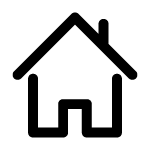
Mold on walls is a common and persistent issue in Singapore, thanks to the country’s ever-humid, tropical climate. If you’ve noticed mysterious stains or musty smells in your home, you’re not alone—thousands of households deal with wall mold every year. Addressing mold isn’t just about cleaning up stains; it’s about protecting both your family’s health and your home’s value.
Why is mold such a headache in Singapore? Our warm temperatures and continual high humidity create perfect conditions for mold spores to thrive. And once mold takes hold, it can spread quickly, making it much harder to remove later. Without proper action, mold can damage paint, drywall, and even the structural integrity of your property over time. Even more worrying, mold growth is tied to a range of health concerns, from mild allergies to serious respiratory issues.
That’s why effective mold removal is so important. Safe, professional cleaning methods are essential—not only to remove existing mold, but to prevent it from coming back. This guide breaks down everything you need to know about spotting mold, understanding its risks, tackling it safely yourself, and knowing when to call in experts. Whether you’re a homeowner or a renter in Singapore, you’ll find practical advice to help keep your indoor environment clean, healthy, and mold-free.

Understanding Mold Growth on Walls in Singapore
Singapore’s tropical climate plays a huge role in why mold loves to grow on walls here. With high humidity levels year-round—often above 80%—moisture in the air becomes trapped on surfaces, making walls prime targets for mold spores. Combine this with warm temperatures and you have a recipe for rapid mold development indoors.
Common causes of wall mold in Singaporean homes include water leaks from pipes or ceilings, condensation forming on cool wall surfaces, and poor ventilation in spaces like bathrooms and kitchens. Even daily activities such as showering, cooking, or drying laundry indoors can raise humidity and allow moisture to settle on walls. Mold can appear anywhere, but it’s especially common in corners, around windows, and behind furniture—places where air flow is limited and water droplets linger.
Once mold spores land on a damp surface, they start to multiply. Mold spreads not only across the surface but can also go under the paint or wallpaper, making it trickier to spot and treat. That’s why it’s important to regularly inspect your walls, especially in areas prone to moisture. Addressing problems like poor ventilation, fixing leaks, and using dehumidifiers are all essential steps to reduce mold risk. In Singapore, constant vigilance and maintenance are truly necessary to keep mold under control in both residential and commercial spaces.

Health Risks Linked to Mold Infestation on Walls
Mold exposure isn’t just unpleasant—it’s a real health threat. According to the World Health Organization, indoor mold and dampness are linked to a 30% increase in the risk of respiratory symptoms and conditions like asthma. Mold spores released from wall colonies can be breathed in, triggering a range of health issues for people of all ages.
Allergic reactions are among the most common effects, including sneezing, runny nose, red eyes, and skin irritation. For those with asthma, mold spores can provoke wheezing and severe asthma attacks. A 2019 study in Singapore found that children living in homes with visible mold were nearly twice as likely to develop respiratory problems such as cough and wheeze compared to those in mold-free homes. The elderly and individuals with compromised immune systems are also at higher risk of fungal infections and chronic respiratory illnesses when exposed to mold for long periods.
Long-term exposure doesn’t just cause short-term discomfort. Research from the Environmental Protection Agency suggests that certain mold types can even produce toxic substances called mycotoxins, which are linked to serious health complications when levels get high indoors. Health experts—including local clinicians—agree that prompt removal of indoor mold is crucial, especially in environments where children, the elderly, or people with underlying health concerns live. If you spot mold on your walls, don’t wait—address it for the sake of your household’s health.

Signs You Need Mold Removal From Walls
- Visible spots or patches: Black, green, or gray areas on wall surfaces are common indicators of active mold.
- Persistent musty smell: A damp or earthy odor that doesn't go away usually means hidden mold is present.
- Peeling paint or wallpaper: Bubbling, cracking, and discoloration often signal moisture and underlying mold colonies.
- Unexplained health symptoms: Increased sneezing, coughing, or itchy skin when indoors can be caused by mold exposure.
Common Causes of Mold on Walls in Singapore Homes
- High Humidity Levels: Singapore’s climate ensures that indoor humidity often exceeds 70%, creating a moist environment where mold spores thrive and multiply rapidly on walls.
- Poor Ventilation: Rooms without proper airflow, such as bathrooms, kitchens, and storerooms, retain moisture, making it easy for mold to take root and spread behind furniture and on walls.
- Condensation: Air conditioning and temperature changes can cause moisture to condense on cool wall surfaces, especially near windows or in air-conditioned bedrooms, fueling mold growth.
- Water Leaks: Leaky pipes, taps, or roofs can lead to constant dampness within wall cavities or on exterior surfaces, providing a continuous source of moisture for mold development.
- Improper Insulation and Sealing: Gaps around windows, doors, or between wall panels let outside moist air in, increasing the risk of condensation and mold formation in affected areas.
By understanding these causes, homeowners can address sources of moisture and improve ventilation, taking proactive steps to reduce the risk of future mold growth on walls.
Step-by-Step Guide for Mold Removal From Interior Walls
Tackling mold on your interior walls in Singapore isn’t just about scrubbing away stains—it’s about careful planning and using the right methods for lasting results. An effective mold removal process should start with proper preparation of the space to protect health and belongings. There are specific cleaning agents suited for different wall surfaces and situations, from gentle, eco-friendly solutions to more powerful professional-grade cleaners.
It’s important to understand that not all walls are created equal. Painted drywall, concrete, and wallpapered walls each require their own safe cleaning approaches to avoid damage and ensure mold doesn’t return. In the following sections, you’ll find detailed guidance on preparing your home, choosing safe and effective cleaning products, and following step-by-step instructions for various wall types.
By following these practical steps, you can successfully remove mold from your home’s walls and maintain a safer indoor environment. However, if you encounter severe or recurring mold problems, professional help may be necessary to ensure a thorough and lasting solution.
Preparing Your Space for Safe Mold Removal
- Isolate the area: Close doors and use plastic sheeting or masking tape to seal off the affected room, minimizing the spread of mold spores to clean areas.
- Increase ventilation: Open windows and use a portable fan to direct air outside, helping to reduce moisture and push airborne spores away from living spaces.
- Protect belongings: Cover furniture and electronics with plastic, and remove items that could become contaminated during cleaning.
- Personal protective equipment (PPE): Wear disposable gloves, a NIOSH-approved mask (N95 or higher), and safety goggles to shield yourself from spores and cleaning agents.
Recommended Cleaning Agents for Mold Removal
- Soap and water: A basic mix works for light mold, especially on painted walls, and is gentle on most surfaces.
- White vinegar: Non-toxic and effective at killing a wide variety of mold species, vinegar is a safe choice for families and pets.
- Baking soda solution: Gently abrasive and excellent for deodorizing, it’s useful on smaller mold patches.
- Professional-grade antimicrobial cleaners: Products like those used by easyclean.sg kill mold at the source and inhibit regrowth, but always follow safety directions.
- Avoid harsh chemicals: Try to limit or avoid bleach, as it can release volatile organic compounds and isn’t always suitable for porous materials.
How to Clean and Treat Mold Patches on Different Wall Surfaces
- Painted drywall:Use a soft sponge with soapy water or white vinegar for light stains.
- Gently scrub the surface—avoid saturating the wall, as excess moisture can worsen mold and damage drywall.
- After cleaning, dry thoroughly and monitor for new spots.
- Concrete or masonry walls:Scrub patches with a stiff brush and a solution of water and baking soda or vinegar.
- For stubborn growth, professional mold removers or antimicrobial sprays can target deeper pores.
- Rinse the area with clean water and let it air-dry completely.
- Wallpapered surfaces:Test cleaning solutions on a hidden area first to prevent discoloration or peeling.
- Lightly dab mold spots with diluted vinegar—avoid soaking the paper.
- If mold is beneath wallpaper, it may need to be carefully removed and replaced after addressing the underlying cause.
- Final steps: For all wall types, always dry the cleaned area with a towel or fan, and keep an eye on it for reappearing mold. Proper drying helps prevent spores from returning.
When to Call Professional Mold Removal Services in Singapore
- Large or persistent mold infestations: If mold covers more than one square meter or keeps coming back, it’s time to call in experts with specialized equipment and containment procedures.
- Hidden or extensive growth: Mold that appears behind walls, in ceilings, or within air conditioning ducts requires professional inspection and advanced remediation methods.
- Health concerns in the household: If anyone has asthma, allergies, weakened immunity, or unexplained health symptoms, seek professional services like easyclean.sg to ensure safe, thorough removal.
- Lack of time or proper tools: Professionals handle the entire process, offer warranties, and ensure the problem is fully resolved.
Benefits of Eco-Friendly Mold Removal Services
- Preserves indoor air quality: Eco-friendly treatments minimize toxic fumes, protecting your family and pets from harmful chemical exposure during and after cleaning.
- Reduces environmental impact: Non-toxic and biodegradable cleaners break down safely, preventing pollution and supporting sustainability efforts.
- Effective and gentle approach: Modern, green cleaning methods—used by companies like easyclean.sg—can remove mold just as well as harsher chemicals, without damaging wall surfaces or furnishings.
- Better for sensitive groups: Children, elderly individuals, and those with allergies or asthma benefit from mold removal that prioritizes health and safety.
Tips for Preventing Mold From Returning to Your Walls
- Improve ventilation: Use exhaust fans in bathrooms and kitchens, and open windows daily to let fresh air circulate through your home.
- Manage indoor humidity: Keep humidity below 60% with dehumidifiers, especially during the rainy season or when drying laundry indoors.
- Fix leaks quickly: Address leaking pipes, taps, or roofs as soon as possible to prevent damp environments where mold can take hold.
- Regular cleaning routines: Wipe down walls and corners frequently, especially in high-moisture areas, to catch early mold growth before it spreads.
- Use mold-resistant materials: Consider anti-mold paint or treated wallpaper in moisture-prone rooms to create an extra barrier against spores.
- Monitor problem spots: Place moisture meters in rooms known for condensation, and check behind furniture, windows, and near air-conditioning units regularly.
Staying proactive with these strategies is the best defense against stubborn mold, helping you keep a safe, comfortable living environment in Singapore’s challenging climate.

Frequently Asked Questions on Mold Removal From Walls in Singapore
- Is mold removal safe for my family? Yes, if you follow proper precautions like wearing gloves, masks, and using non-toxic cleaners. For large infestations, professionals use specialized equipment and safe methods to protect indoor air quality.
- How much does professional mold removal cost in Singapore? Prices typically range from $200 to $1,000+, depending on the size of the affected area and severity of the infestation. You can request a free quote from reputable providers like easyclean.sg for a clear cost estimate.
- How often should I clean walls to prevent mold? Regularly inspect and clean at least once every few weeks, especially in humid areas. More frequent checks are recommended during Singapore’s rainy seasons.
- What happens during professional mold removal? Professionals assess the damage, contain the affected spaces, use safe cleaning agents, and ensure thorough drying. Some companies provide air quality testing and warranties for long-term protection.
- Will mold return after it’s cleaned? Mold can reappear if underlying causes like leaks or high humidity aren’t resolved. Prevention—through maintenance, ventilation, and timely repairs—is key to keeping your walls mold-free.
- Visit our page on mold removal treatment to know how we can help.
Suggested External References






